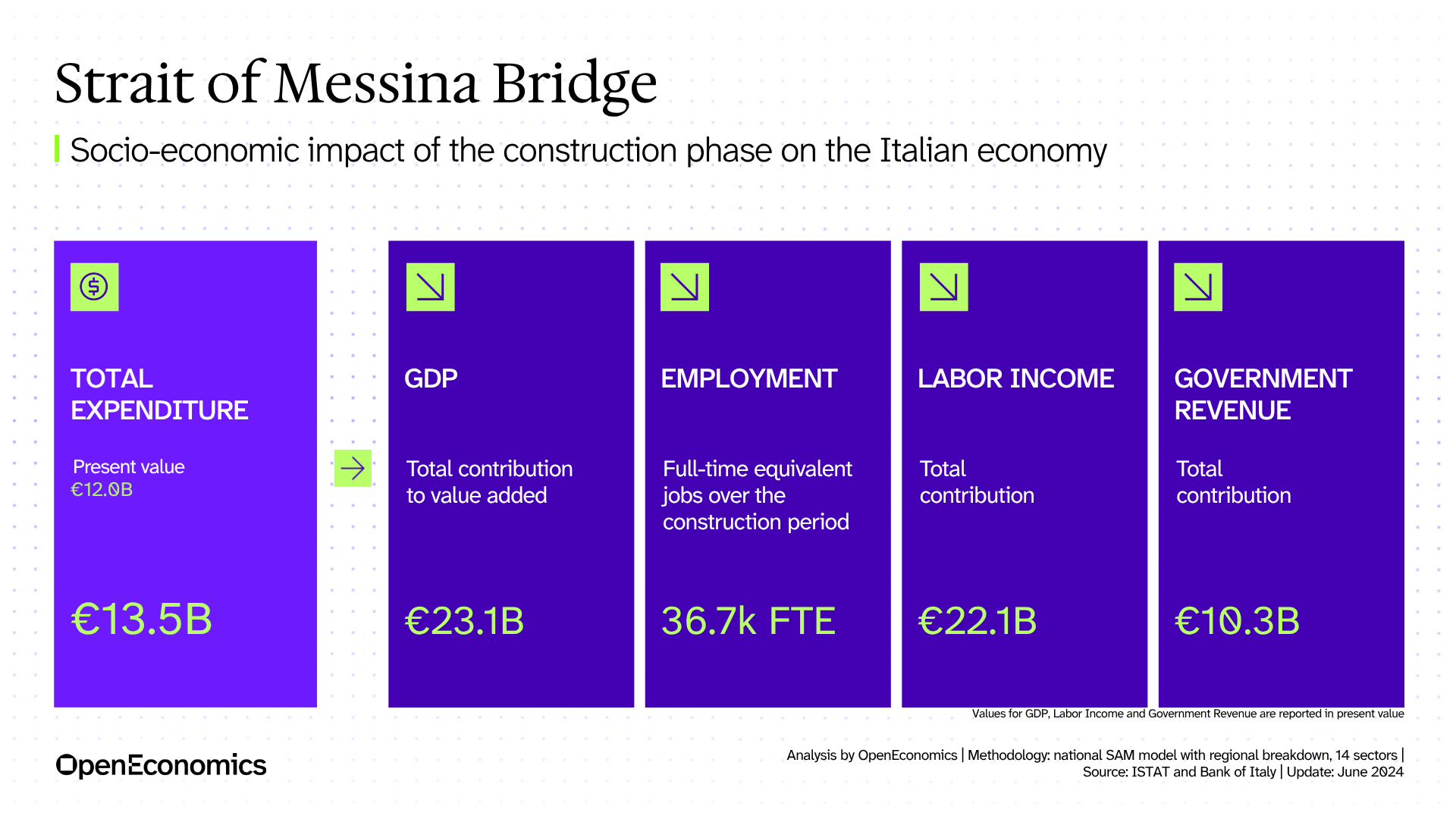OpenEconomics carried out, on behalf of Uniontrasporti and under the initiative of Unioncamere Sicilia, an evaluation of the economic and social value of the Bridge over the Strait of Messina — from the construction phase to thecost-benefit analysis across the project’s useful life.
OBJECTIVES
Providing quantitative evidence for informed stakeholder debate
Uniontrasporti, under the initiative of Unioncamere Sicilia, commissioned the analysis to credibly measure the socio-economic value creation generated by the infrastructure.
The analysis incorporates:
- Direct, indirect, and induced macroeconomic impacts from construction
- Economic costs and accrued benefits across the asset’s lifecycle
The purpose is to enable informed dialogue among stakeholders, demonstrating the infrastructure’s ability to stimulate supply chain activities, facilitate specialized employment, and increase government revenues—yielding benefits at a national scale that substantially outweigh the projected costs.
SOLUTION
Lifecycle analytical approach: from construction to operational impact
OpenEconomics’ assessment comprises two integrated components:
- Construction phase impact modelling, using a Social Accounting Matrix (SAM) for Italy, with sectoral resolution across 14 industries and regional breakdown
- Cost-benefit analysis consistent with European Commission guidelines

KEY FINDINGS
Macro Results: GDP, jobs, fiscal revenues, and Economic Net Present Value (ENPV)
Highlights include:
- GDP impact: €23.1 billion
- Job creation: 36,700 full-time equivalent positions
- Fiscal revenues: €10.3 billion
- ENPV: €1.8 billion, with a benefit/cost ratio of 1.2
Benefits are broadly distributed nationwide and significantly boost multiple sectors, especially manufacturing, construction, and business services. The cost-benefit assessment confirms robust positive value for the investment.
ADDED VALUE
Adopting International Best Practices and Providing Policy-Relevant Evidence
- Methodology: Social Accounting Matrix (SAM), regional breakdown, 14 sectors, grounded in ISTAT and Bank of Italy statistics for replicable estimates
- KPIs: Consistent, transparent metrics on GDP, employment, and fiscal returns, supporting scenario and spatial comparisons
- Alignment: Standardized methods compatible with Trans-European Transport Networks (TEN-T), enhancing the policy dialogue
👉 Explore the full analysis (report in italian)













